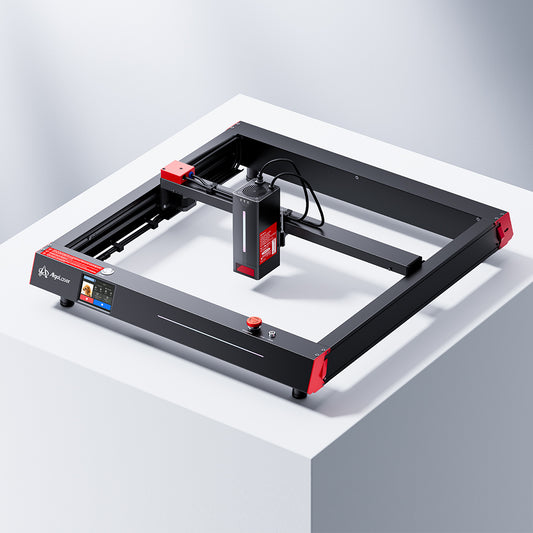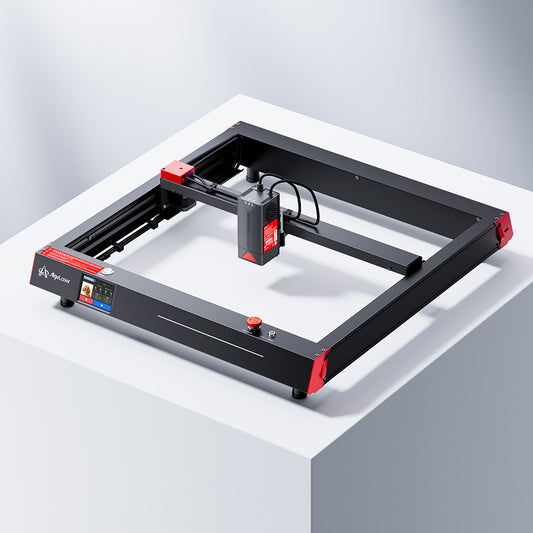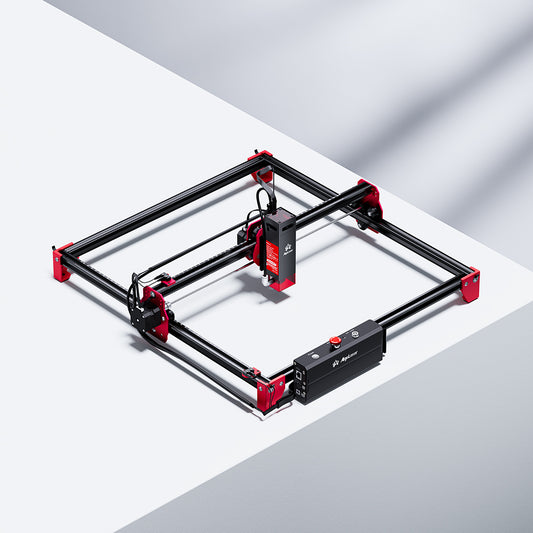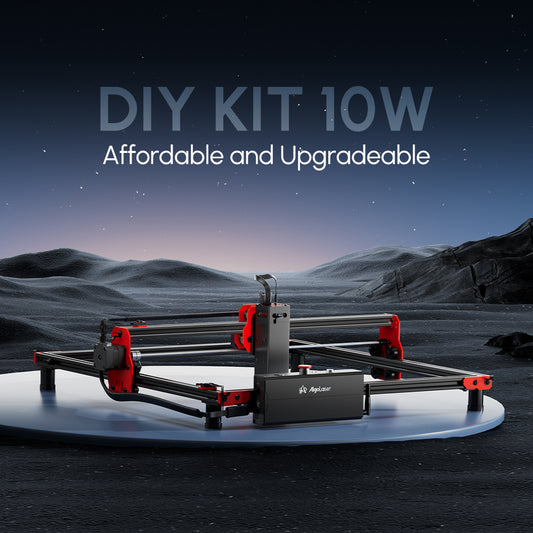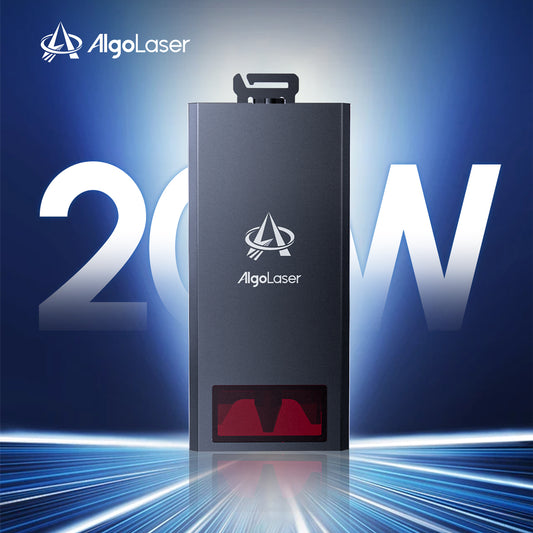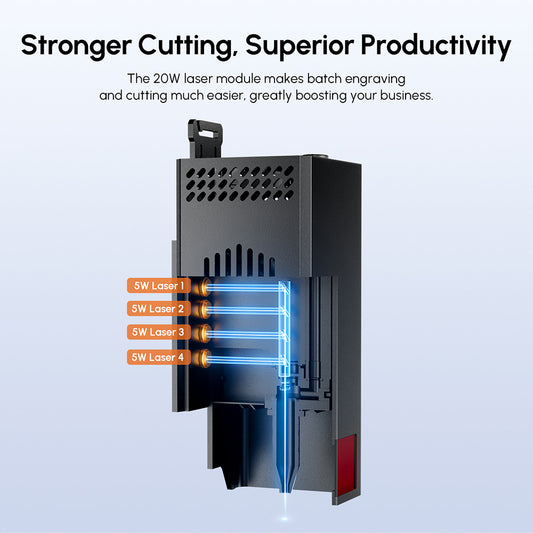What Can a Laser Engraver Do in the Workshop
If you're like me—a full-on laser engraving geek who can't resist unboxing a new machine—then you know the thrill of setting up a laser engraver for the very first time. In today's workshop adventure, we're diving into the AlgoLaser Alpha MK2, a powerful diode laser cutter and engraver that promises to transform raw plywood sheets into polished projects.
The Green Cottage DIY crew got their hands on the Alpha MK2, along with some accessories, trial materials, and a handy honeycomb cutting base. With zero prior laser experience, the challenge was clear: can we unbox, assemble, and create three fully functional projects straight out of the box? Spoiler: yes, and the results are nothing short of impressive.
Let's walk through the unboxing, setup, and the three projects that put this desktop laser engraver to the test: a practice cut, a nursery wall sign, and a custom toolbox insert.
Unboxing the Alpha MK2 Laser Engraver
There's something magical about peeling back layers of protective foam and discovering the parts of a machine that's about to reshape your workshop life. Inside the box, we found:
· The laser module (the heart of the engraver)
· Frame components for the 400x400mm working area
· A small touchscreen interface for simple controls
· Safety glasses (never engrave without them!)
· An air pump with tubing to clear smoke from the cutting path
· Power cables, USB cord, screws, and tools for assembly
· A sample wood sheet to test engraving
· A quick-start guide
AlgoLaser included a honeycomb cutting plate as well, which isn't part of the basic kit but makes a huge difference. It prevents scorching the workbench and keeps cuts cleaner.
Assembly was straightforward. Even as newcomers, we had the Alpha MK2 up and running in less than an hour. It's a ready-to-use laser engraver that doesn't require major tinkering. Just connect, calibrate, and cut.
Learning the Basics: First Test Project
Before attempting big builds, we tested the Alpha MK2 on a few trial designs. Using the built-in sample files and the AlgoLaser app, we cut small shapes like keychains and ran a power test grid on plywood.
Why a power test? Because every material—from 3mm birch plywood to acrylic sheets—reacts differently to the laser. The grid shows which speed and power combo delivers clean cuts without overburning. This is an essential step for any laser engraving beginner.
The first successful cuts proved something important: this machine is approachable even for absolute beginners. The laser tracked smoothly, the air assist cleared smoke, and the preview feature made sure the design fit the board before cutting.
Project 1: A Nursery Wall Sign
The first "real" project was a custom wall sign for a baby's room. We wanted a layered design with an animal motif (a crocodile, in this case) plus a name cutout. This was the Alpha MK2's first big test with detailed vector cutting.
The workflow:
1. Design in Photoshop (or vector software like Inkscape).
2. Export the file to LightBurn or the AlgoLaser app.
3. Arrange parts within the 400x400 workspace.
4. Secure plywood and set laser focus using the included gauge.
5. Run the job with air assist on for clean edges.
The engraver handled the intricate lettering and animal shapes beautifully. Each layer was cut separately and stacked later to build depth. This highlighted one of the Alpha MK2's strengths: precise repeatability. The cuts aligned perfectly, making gluing and painting easy.
The full sign took around three hours, including prep and test cuts. The result was a professional-quality laser cut wall art—the kind you'd see on Etsy, but now entirely DIY.
Project 2: A Wooden Chair Prototype
The second project pushed the Alpha MK2's capacity. Could we cut structural components for a small wooden chair using only straight plywood strips?
Here's what we did:
· Bought 4mm plywood sheets at the lumberyard (cheaper and more realistic than the premium sample wood).
· Ripped them into 40cm strips to fit the engraver bed.
· Designed chair joints and angles digitally.
· Let the Alpha MK2 slice out dozens of parts.
Cutting took multiple passes for thicker sections, but the engraver managed them reliably. The most impressive part? Accuracy. Each mortise-and-tenon-style connector fit snugly without major sanding.
While this was just a prototype, it shows how a laser cutter for wood can create flat-pack furniture. Imagine scaling this process to bookshelves, tool racks, or custom jigs—all possible with the Alpha MK2.
Project 3: A Custom Toolbox Insert
The final test was pure workshop utility: creating an insert for a rolling tool cart. Anyone who owns sockets knows the struggle—finding the right size in a messy drawer wastes time. A laser-cut organizer solves this instantly.
The process:
1. Trace outlines of sockets and wrenches in vector software.
2. Arrange them into a grid-sized insert.
3. Cut the insert from plywood.
The Alpha MK2 handled the repetitive shapes effortlessly. Once installed in the drawer, every tool snapped into its custom slot. Not only did this improve workshop organization, but it also showed how versatile a laser engraving machine can be when applied to daily DIY problems.
Lessons Learned from the First 3 Projects
Testing the Alpha MK2 with these projects taught us a lot about its real-world capabilities:
· Ease of use: With clear instructions and intuitive software, the learning curve is manageable. Even laser novices can be up and running in a weekend.
· Material versatility: From plywood to softer craft woods and even cardboard, the engraver handled it all. With proper settings, it could also tackle leather engraving, paper cutting, and stone etching.
· Precision: Cuts were crisp, repeatable, and aligned perfectly—ideal for layered art and structural builds.
· Smoke management: The included air assist worked well, but good ventilation is essential. A fume extractor or open garage is recommended.
· Time investment: Projects ranged from one to three hours, mostly due to design prep. The actual cutting was faster than expected.
Why the Alpha MK2 Stands Out
There are plenty of desktop laser engravers on the market in 2025, so why does the Alpha MK2 stand out?
1. Large working area (400x400mm) – enough for medium-sized projects without tiling.
2. Diode laser power options (20W module available) – strong enough to cut 4–6mm plywood in one or two passes.
3. Touchscreen + app integration – control the engraver directly or through the AlgoLaser mobile app.
4. AlgoOS software – intuitive and regularly updated with features like batch engraving and recovery mode.
5. Value for money – professional-grade output at a hobbyist price point.
Whether you're building furniture prototypes, creating personalized gifts, or organizing your workshop, the Alpha MK2 proves itself as a reliable DIY laser cutting machine.
Final Thoughts
So—what can a laser engraver really do in the workshop? If the Alpha MK2 is anything to go by, the answer is: a lot more than you think. From decorative signs to furniture parts to practical storage inserts, this tool combines creativity with function.
The Green Cottage DIY team went from unboxing to finished projects in just a couple of days, with no prior laser experience. That's the real magic here. The AlgoLaser Alpha MK2 makes the once-intimidating world of laser cutting and engraving accessible to anyone willing to dive in.
If you've ever considered adding a laser engraver for woodworking to your setup, this machine is a perfect gateway. It's versatile, powerful, and—most importantly—fun to use. And in the DIY world, fun often leads to innovation.
